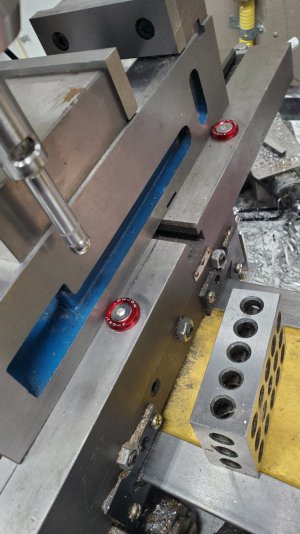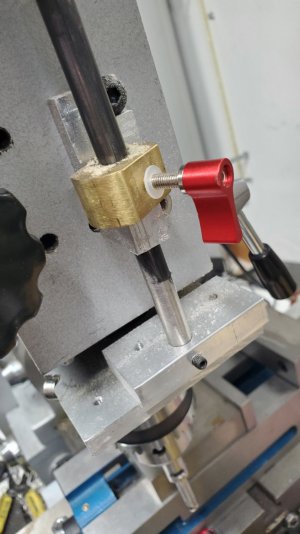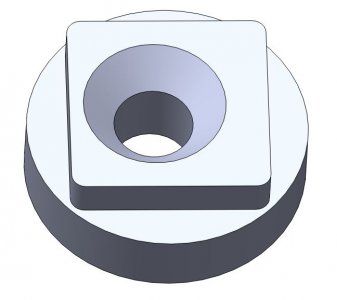- Joined
- Feb 24, 2019
- Messages
- 925
I have a small lathe/mill combo and one of the things I hate most is switching from the lathe cutting head to the vise for milling.
Getting the vise straight is always a chore. I got it so I could do it in 5 minutes or so but that wasn't good enough.
Originally I thought of adding location points to the vise but that was going to be more work than it was worth.
What I did was to just use the Y-axis slide to locate a straight line. Using it to drill two holes spaced around 6 inches apart. Since I was using the actual path of the table, I know they are perfectly square.
Then I tapped the holes with a M6x.75 tap and threaded a matched pair of SS cap screws. If I ever put on my big vise, I can just take them out and the table has nothing impairing the surface plane.
Wen I put on the normal vise, I just slide it up to the two cap screws and it's set.
I checked with the edge finder and it's within 0.02mm which is less than 0.001". The repeatability at that tolerance is about 80%. The other 20% came within 0.0015 which is far more precise than anything I need.
Wondering if anyone else has done this trick/shortcut.
Next thing is to drill the vise to bolt down from the top as opposed to clamping down from the sides.
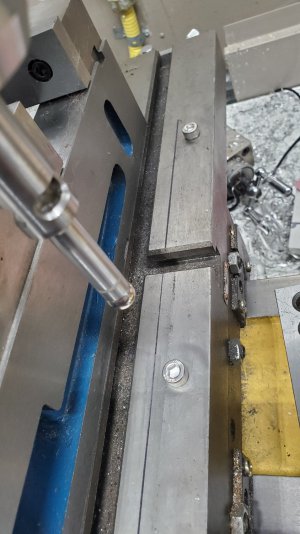
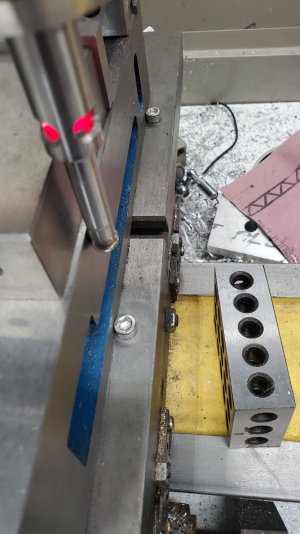
Getting the vise straight is always a chore. I got it so I could do it in 5 minutes or so but that wasn't good enough.
Originally I thought of adding location points to the vise but that was going to be more work than it was worth.
What I did was to just use the Y-axis slide to locate a straight line. Using it to drill two holes spaced around 6 inches apart. Since I was using the actual path of the table, I know they are perfectly square.
Then I tapped the holes with a M6x.75 tap and threaded a matched pair of SS cap screws. If I ever put on my big vise, I can just take them out and the table has nothing impairing the surface plane.
Wen I put on the normal vise, I just slide it up to the two cap screws and it's set.
I checked with the edge finder and it's within 0.02mm which is less than 0.001". The repeatability at that tolerance is about 80%. The other 20% came within 0.0015 which is far more precise than anything I need.
Wondering if anyone else has done this trick/shortcut.
Next thing is to drill the vise to bolt down from the top as opposed to clamping down from the sides.




